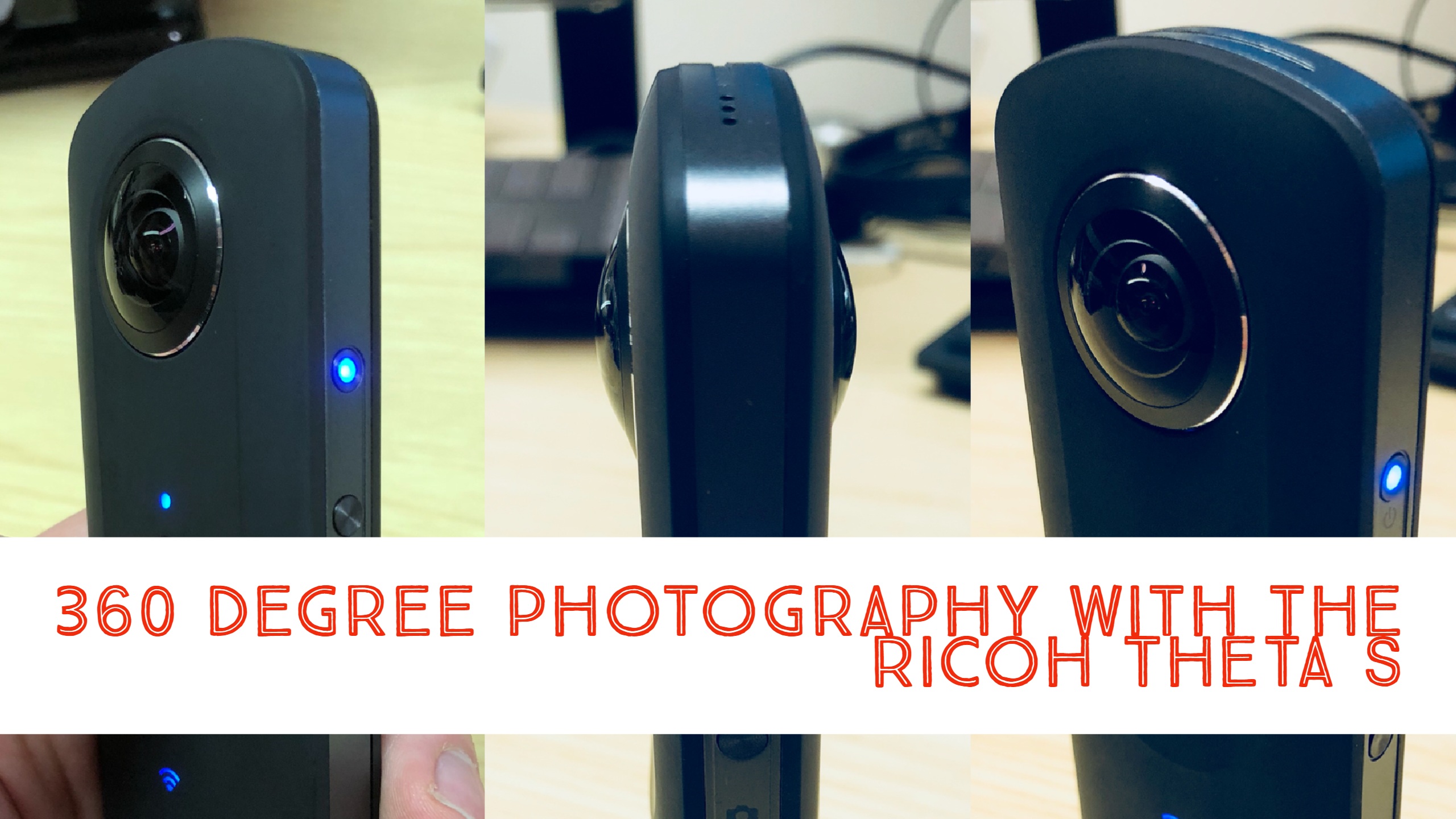What is 360° photography?
For most internet users, our first experience of 360° images has been on Facebook or YouTube. The idea of being able to move your phone and ‘look’ around a photo as if you are standing there is a great way of creating an immersive experience, especially when combined with virtual reality headsets such as Google Cardboard.
360° photography has become much more popular over the last few years. This is because it is easier than ever to create a 360° image. Apps like Google Street View, and many more within the respective app stores allow you to quickly take an image with just your normal phone camera (these are sometimes referred to as photo spheres). The stitching of these images is done by the software and has improved immeasurably over the last few years.
For those wanting to take it further and take better quality images, there are a range of devices, at a range of prices. They also come in a range of configurations. Some have one lens pointing up, others like the GoPro are a rig with many lenses (GoPro cameras) pointing out. Images are then stitched using software.
The camera we use is a Ricoh Theta S, it has two fish-eye lens positioned either side of the body to give a full 360° image. It is a well reviewed camera, that is pocketable, relatively cheap and easy to use and the images look great straight out of the box. This post looks at the use and functionality of the Theta and how we’re looking to make the most out of it for use in education.
How it works
You can unbox the Theta S and start taking photos right away. Instead of a display, it has a prominent shutter button that falls nicely under the thumb when held normally and a few useful lights that show what mode you are in. You won’t be able to see the images immediately though. For that you’ll need to download the companion app Theta S. The app guides you through connecting to the camera, via a WiFi connection. It is simple to set up and once that’s done you get a live preview from the camera and can operate the camera fully by remote, including settings for manual control, shutter priority and noise reduction. Once you are done, you can then transfer images to your smart phone (see here for supported devices) and that’s it, you have your images.
Visit the homepage of the Theta S for more detailed device specs. https://theta360.com/uk/about/theta/s.html
Companion apps
Ricoh have two apps that work with their Theta ecosystem. Theta S is the main companion app which is used for shooting and reviewing images and videos. It also gives you access to manual shooting modes.
The other app is Theta+ which allows you to add filters to images, as well as creating videos that travel around the 360° image. You can then export wherever you want.
Sharing
Videos and regular images can be shared across most platforms. If you want to share the full immersive 360° photo you have a few choices. Facebook supports 360° images, and YouTube supports 360° video. Flickr also supports 360° photos and from there you can share and use embed codes for blogs and websites. There are also new players and dedicated sites such as 360player.io.
Example images
Here is a gallery we created for Digital Discovery Week. These images have been enhanced slightly using Photoshop.
This is an image of the University Library straight off the camera, no post processing. (Click here or on the image to view in 360° on Flickr.)
360° photos in education.
This type of photography is suited to being able to take you to places that are otherwise inaccessible, for example research labs or spaces where there might be hazardous material. It may also work for introduction to basic skills in an environment where one may need to know certain processes or methods of working prior to using real equipment, such as lab equipment. You might be able to test yourself on the steps to using a centrifuge safely, without worrying about damaging a real one.
Until recently Google Expeditions was the primary player, presenting 360° images of locations around the world and taking ‘groups’ on a virtual tour. Now we are seeing more companies are offering similar things. Each with their own unique selling point, VR Drop and Share by VR Craftworks in Brighton has an innovative way of guiding your tour party to a certain area of the screen, and it’s free. Nearpod also has a ‘Field Trip’ option, powered by 360 Cities.
Technology Enhanced Learning are exploring H5P and some of the Pro features in Thinglink because 360° images are immersive but still a passive experience. Tools such as Thinglink and H5P can allow interactivity to be added to the image. The Premium version of Thinglink lets you add hotspots to images and link to other content, such as web links, videos or other 360° images to create a tour. You can also embed web content, i.e. Google Docs or other interactive content like H5P.
H5P allows you to ‘create, share and reuse interactive HTML5 content in your browser’ (h5p.org). For example you can create quizzes, flashcards, sorting activities, audio response questions, accordion menus, interactive videos, and even images with hotspots. What’s great is that all of this is free.
We’re at the beginning of our exploration into the world of interactive 360° photography so would love to see what anyone else is doing. Please get in touch at tel@sussex.ac.uk




